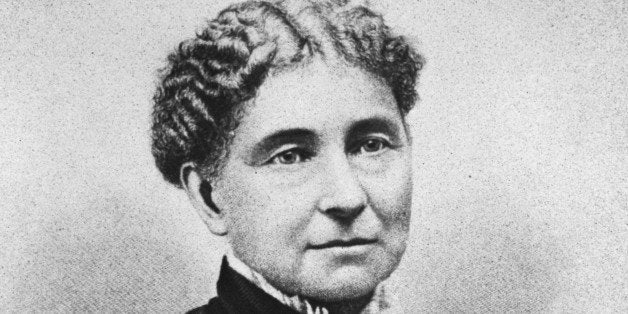
The computer compiler. Kevlar. The first effective childhood leukemia drug. The dishwasher. The bra. The windshield wiper. What do these have in common? They were invented by a woman. Now match each of the following innovations with its developer or promoter:
- A 0-10 score named after her that is used at one minute and five minutes after birth on every newborn worldwide born in a hospital to assess its medical condition.
- Advocate in the mid-1800s for women's attire that did not involve a corset; instead it involved a looser top, a skirt that stopped at the knee, with a pair of pants worn under the skirt. It has come to be named after her.
- Co-developer of Clinistix, the first dip-and-read diagnostic test strips for monitoring glucose in the urine.
A. Amelia Bloomer
B. Virginia Apgar
C. Helen Murray Free
(answers at the end)
The first woman to own, operate and edit a newspaper for women "The Lily" (published in Seneca Falls, New York -- the birthplace of women's rights), ardent suffragist Amelia Bloomer is often recalled for her support of a revolution in dress for the women of the mid-1800s. At that time, women wore corsets under their dresses which were very heavy, required assistance for dressing, and permanently altered the locations of a woman's organs. Bloomer advocated for a looser top, a skirt that stopped at the knee, with a pair of pants worn under the skirts ("bloomers"). Bloomer and others abandoned this more comfortable attire when it became apparent that audiences were more focused on their clothing than on their suffrage message. A long-time associate of women's rights pioneer Elizabeth Cady Stanton, Bloomer has been inducted into the National Women's Hall of Fame.
In the early 1950s, much attention at birth was focused on the mother. Dr. Virginia Apgar , a pediatric anesthesiologist at Columbia University, was concerned that more attention needed to be focused on the infants, particularly those that needed medical assistance. In 1952, Dr. Apgar developed a maximum ten-point score, called the Apgar Score, that assesses the infant's condition in five categories and awards a 0, 1 or 2 in each category: Appearance, Pulse, Grimace, Activity, Respiration (APGAR). It can be administered quickly by any medical professional, has saved the lives of countless individuals, and is used worldwide in hospitals. The first woman to head a department at Columbia University and the first woman full professor across the entire University, Dr. Apgar has been featured on a U.S. postage stamp and has been inducted into the National Women's Hall of Fame.
The holder of seven patents, chemist Helen Murray Free spent her career collaborating with her husband. Together, they invented technologies that benefit people worldwide and changed the face of medical diagnostics. One of their most significant efforts was the development of Clinistix, the first dip-and-read diagnostic test strip for monitoring glucose in the urine. Today, dip-and-read diagnostic strips are used for diabetes, pregnancy tests, and other conditions. Free received numerous honors, including the 2009 National Medal of Technology and Innovation. The Medal citation reads "For her seminal contributions to diagnostic chemistry through development of dip-and-read urinalysis, which gave rise to a technological revolution in convenient, reliable, point-of-care tests and patient self-monitoring." Free has been inducted into the National Women's Hall of Fame.
Learn about more she-roes and celebrate amazing women. From clothing, to saving lives, to providing medical treatments, women have seen a need and invented a solution. Dr. Virginia Apgar and Amelia Bloomer are among the more than 850 women profiled in the book Her Story: A Timeline of the Women Who Changed America. I am proud to stand on the shoulders of these mothers of invention.
(answers: 1-B, 2-A, 3-C)
